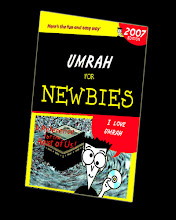It is one of the fastest expanding city in the world. It has 30% of the world's cranes (mechanical ones, not the birds). Everywhere you go you would see construction sites. 2 years from now, the city would have transformed itself drastically.

It is home to many of the world's first, finest, biggest and tallest. For example, the Burj al-Arab (above; source: internet) is the world's tallest hotel and it boasts the finest and most opulent hotel rooms in the history; it has rightfully earned its 7 stars. It stands on an artificial island 280 metres out from Jumeirah beach, and is connected to the mainland by a private curving bridge. It is an iconic structure, designed to symbolize Dubai's urban transformation and to mimic the shape of the sail of an Arabian boat dhow. 
 Just a peek into the hotel will cost one 60 pounds.
Just a peek into the hotel will cost one 60 pounds. And one night can set one back to between $7,500 to $15,000; the panaromic suite costs $8,250 per night, and that doesn't include the fine dining in the many posh restaurants (like the underwater restaurant for one) or the other amenities (the tennis court, see below; source: internet).
And one night can set one back to between $7,500 to $15,000; the panaromic suite costs $8,250 per night, and that doesn't include the fine dining in the many posh restaurants (like the underwater restaurant for one) or the other amenities (the tennis court, see below; source: internet).
 Another tallest in the world is the Burj Dubai (above, source: internet). Due to be completed in 2009, it will be the world's tallest building, the tallest freestanding structure, and the world's tallest land based structure in the world, beating current title holders Taipei 101 in Taipei, the CN Tower in Toronto, and the guyed KVLY-TV mast in North Dakota, respectively. Holy shit.
Another tallest in the world is the Burj Dubai (above, source: internet). Due to be completed in 2009, it will be the world's tallest building, the tallest freestanding structure, and the world's tallest land based structure in the world, beating current title holders Taipei 101 in Taipei, the CN Tower in Toronto, and the guyed KVLY-TV mast in North Dakota, respectively. Holy shit. Soon, in July, and slightly more than half completed, it will overtake Taipei 101 as the world's tallest building (refer above). No shit. It was monstrous when I saw it (half built, see below).
Soon, in July, and slightly more than half completed, it will overtake Taipei 101 as the world's tallest building (refer above). No shit. It was monstrous when I saw it (half built, see below). Other interesting must-sees of Dubai are definitely the interesting man-made (not one but three) palm tree-shaped islands and the world-shaped archipelago of reclaimed islands (see pictures below, source: internet).
Other interesting must-sees of Dubai are definitely the interesting man-made (not one but three) palm tree-shaped islands and the world-shaped archipelago of reclaimed islands (see pictures below, source: internet).
 It is hard to imagine that all this happened within the past two decades. Prior to this, Dubai was just a small trading port, clustered around the mouth of the Creek (see picture of the modern-day Creek below).
It is hard to imagine that all this happened within the past two decades. Prior to this, Dubai was just a small trading port, clustered around the mouth of the Creek (see picture of the modern-day Creek below).
Dubai has been so successful in its transformation that it has attracted thousands of foreign traders, merchants and later businessmen into its shores over the decades. Currently, 20% of Dubai's population consists of the natives (called Emiratis). And the other 80% are foreigners (expats) who are mainly from India, Pakistan, the Phillippines, Indonesia, Saudi Arabia and other Arab nations.
Okay, enough of the info, its time for the pictures....








No comments:
Post a Comment